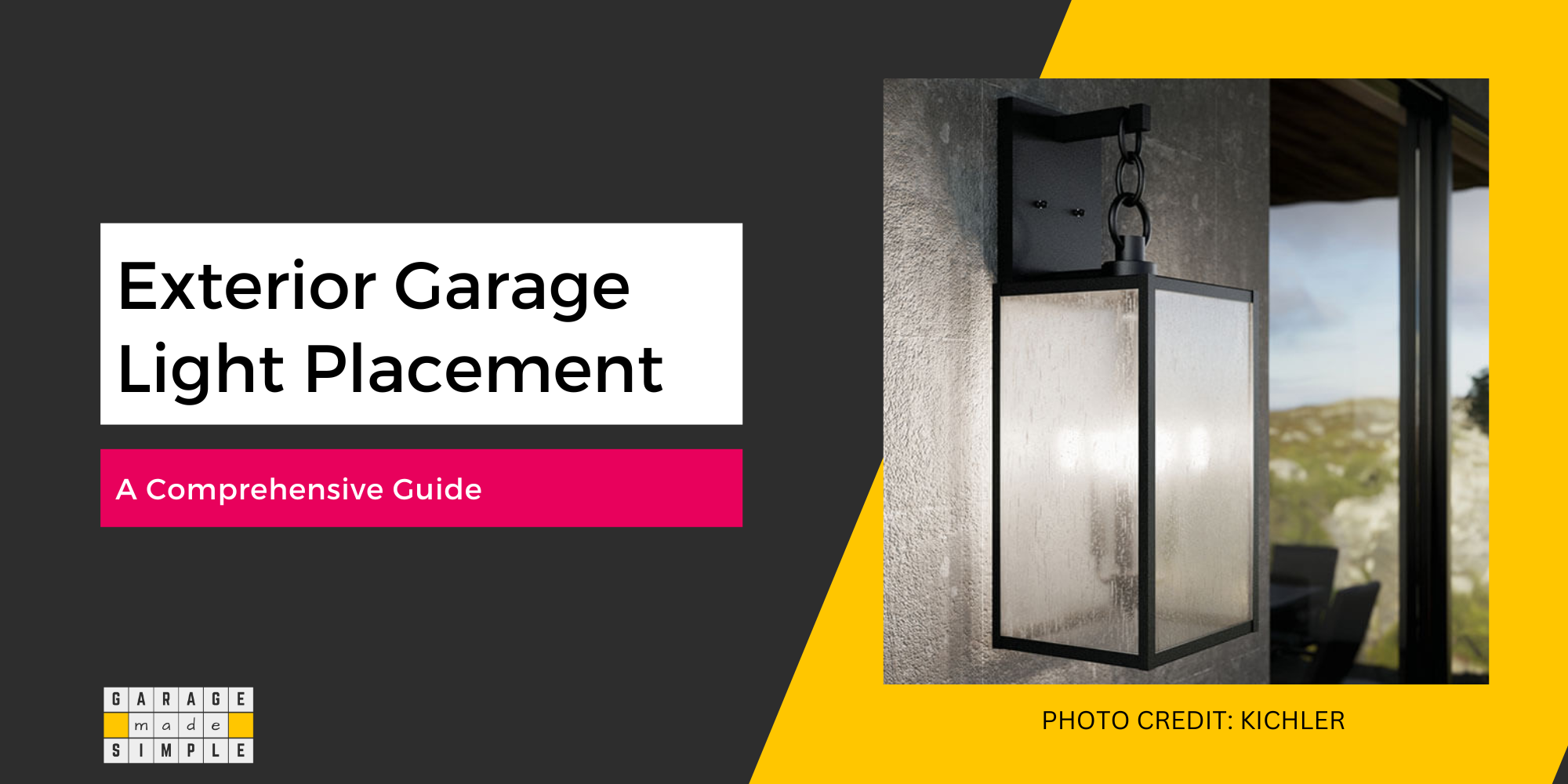What Size Breaker Do I Need for a Detached Garage? (A Quick Guide!)
garagemadesimple.com is a participant in the Amazon Services LLC Associates Program, an affiliate advertising program designed to provide a means for sites to earn advertising fees by advertising and linking to Amazon.com . The website is also an affiliate of a few other brands.
What Size Breaker Do I Need for a Detached Garage?
Is your new detached garage almost finished? Maybe you just have a few final things to take care of, before you can start using it. Surely getting power to the detached garage would be among your top priorities. For that you need to buy a breaker. But what size breaker do you need for a detached garage?
A detached garage with normal electric load needs a 50 A or 60 A breaker. A garage with a well equipped workshop, a space heater, a mini split ac/heating, etc. will need a 100 A breaker. A 100 A breaker will also give you free capacity for adding more branch circuits and load in the future.
The size of the breaker required for a detached garage is a function of the proposed electrical load. Having said that, it is always better to plan for 20 to 30% additional load for future expansion.

How To Calculate the Breaker Size for a Detached Garage?
To calculate the breaker size for a detached garage you need to add up the power requirement of all lights, appliances, machinery & equipment that will be connected to the garage subpanel.
The breaker size in Amps is calculated using the formula:
Current (Amps) = Power (Watts) / Voltage (Volts)
Example 1 (Normal Garage):
Power (Watts) = 10,000 W
Voltage (Volts) = 240 V
Then the Current (Amps) = 10,000 W / 240 V = 41.67 A
You must add a safety factor of 25% to allow for smooth operation of the circuit breakers even in high temperatures. Therefore, the breaker size should be rated at 125% X 41.67 A = 52.09 A.
This would be rounded up to 60 A as breakers are available either as 50 A or 60 A. This is good as it gives you room to add to the garage load in future, should the need arise.
Example 2 (High Load Garage):
Power (Watts) = 18,000 W
Voltage (Volts) = 240 V
Then the Current (Amps) = 18,000 W / 240 V = 75.00 A
You must add a safety factor of 25% to allow for smooth operation of the circuit breakers even in high temperatures. Therefore, the breaker size should be rated at 125% X 75.00 A = 93.75 A.
This would be rounded up to 100 A, a size that is quite popular and easily available.
NOTE: In this context, the terms, “breaker”, “breaker box” and “subpanel” are used interchangeably and mean the “subpanel assembly”.
Article 220 Branch-Circuit, Feeder, and Service Load Calculations of 2020 National Electric Code (NEC) provides requirements for calculating branch-circuit, feeder and service loads
How Many Circuits Are Allowed in a Panel?
Until 2008 NEC permitted a maximum of 42 circuits on a panel. However this restriction has now been lifted and a larger number of circuits are allowed on a main panel or a subpanel.
The number of circuit breakers depends on the subpanel rating in amps as well as the specific design. The specifications of a subpanel will state, both the number of spaces and the number of circuits that the panel can support.
The number of circuits can be higher than the number of spaces. This is because a standard space can use a tandem (twin) breaker. A tandem (twin) breaker allows two circuits to fit in the space of a one full size breaker.
So it is quite common to find subpanels with twice as many circuits as spaces. Circuit breakers can be single pole or double pole.
Single pole circuit breakers in a subpanel will provide 120 V and are usually rated as 15 A or 20 A. They are ideal for receptacles and lighting.
Double pole circuit breakers in a subpanel will provide 240 V and are usually rated from 15 A to 50 A. They are ideal for appliances, such as heaters or air conditioners.
Moreover a breaker can be GFCI type or AFCI type. Some breakers combine the AFCI & GFCI function and are known as Dual Function Circuit Breakers.
The table below is just to give you an idea of some of the options available:
| Brand with Amazon Link | Panel Rating (Amps) | # of Spaces | # of Circuits |
| Siemens 60 amps Surface Mount Circuit Breaker | 60 A | 2 | 4 |
| Square D by Schneider Electric QO | 60 A | 4 | 8 |
| Square D – HOM816M100PC Homeline | 100 A | 8 | 16 |
| Siemens SN2040B1100 SN Series | 100 A | 20 | 40 |
| Siemens SN1632L1125 SN Series | 125 A | 16 | 32 |
What Gauge Wire Do I Need for a Subpanel?
To determine the wire size from the main panel to the subpanel you need to have the following information and facts:
- Rating of the garage subpanel in amps
- Safety factor as per 2020 NEC : You must add 20% to the subpanel rating
- Voltage loss for every hundred feet of the wire: Voltage typically drops 20% for every 100’ of wiring
- Ampacity of the feeder wire
Sample calculations for a 60 A and a 100 A subpanel that is 100’ away from the main panel is as under:
Feeder Wire for 60 A Subpanel
For a 60 amp subpanel box in a detached garage that is 100’ away from the main panel use #3 THHN/THWN or THWN wire with an ampacity of 100 amps.
Feeder Wire for 100 A Subpanel
For a 100 amp subpanel box in a detached garage that is 100’ away from the main panel use #0 (1/0) THHN/THWN or THWN wire with an ampacity of 150 amps.
Please refer to AWG Wire Gauge Chart
Formulas for calculations to comply with NEC code.
Min. Wire Ampacity = (Subpanel Rating) Amps / 80%
Min. Wire Ampacity (100 ft away) = Min. Wire Ampacity Amps × 120%
NOTE: Maximum loading for any branch circuit is 80% of the rating of the circuit for ampacity of wire for any load. Voltage drops by 20% over a 100’ distance.
DISCLAIMER: What Is the Safest Way to Handle Electrical Wires?
This post is for information only. I strongly recommend that all electrical work should be entrusted to licensed professional electricians. In case you do decide to do some of the work yourself, make sure that:
“Treat all electrical wiring, even “de-energized” ones as if it is live, unless it has been locked out and tagged”
You must follow the basic safety guidelines, as under:
- Use protective eyewear, especially when drilling or grinding metal
- Wear insulated rubber gloves when working on any circuit or branch circuit
- Always use insulated tools while working with electricity
- De-energize the electrical wires on which you will be working. Tag the circuit breaker to prevent someone from switching it on accidently
- Electrical wiring in wet or damp locations or underground must be within a PVC conduit
- Underground wiring conduits should be at least 18 inches below grade as per code
- All receptacles for equipment that could be in wet or damp locations should be equipped with Ground Fault Circuit Interrupter (GFCI)
- Never use old frayed cables, damaged insulation or broken plugs
- High voltage equipment should be properly grounded to insure electricity flows directly to the ground and not through the person in contact with the live wire
Thank you very much for reading the post. I do hope you found it informative and useful.






